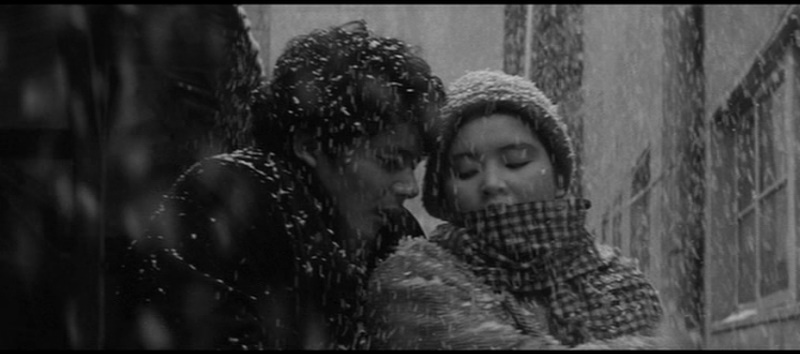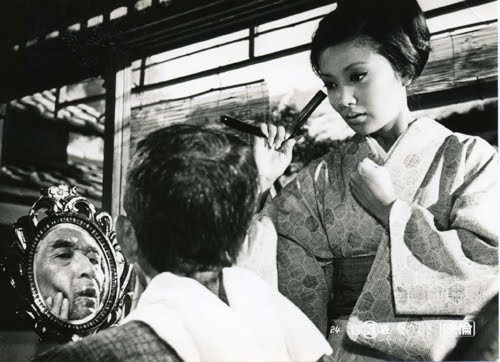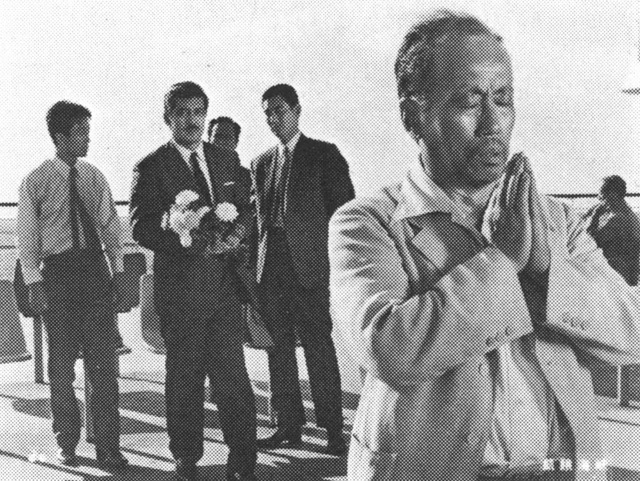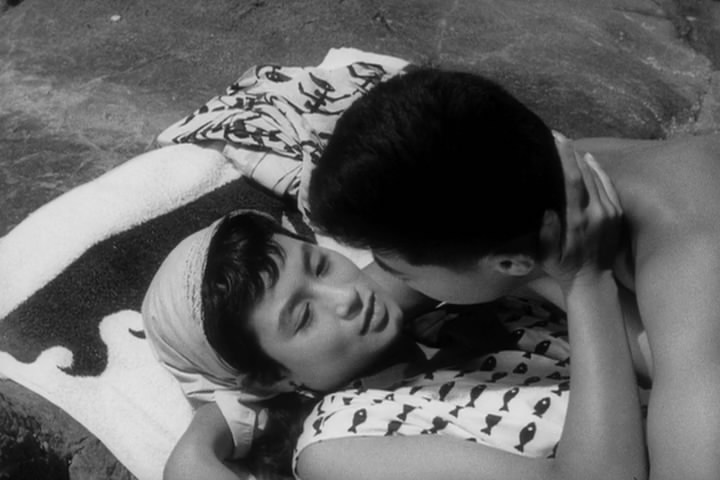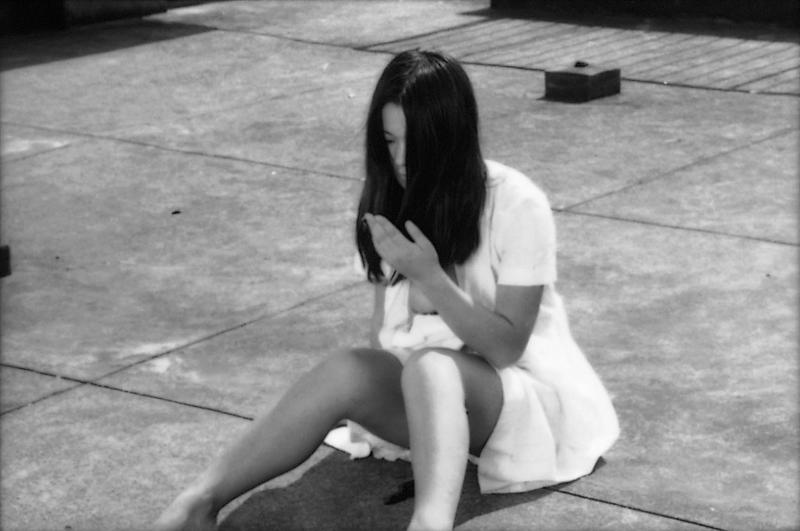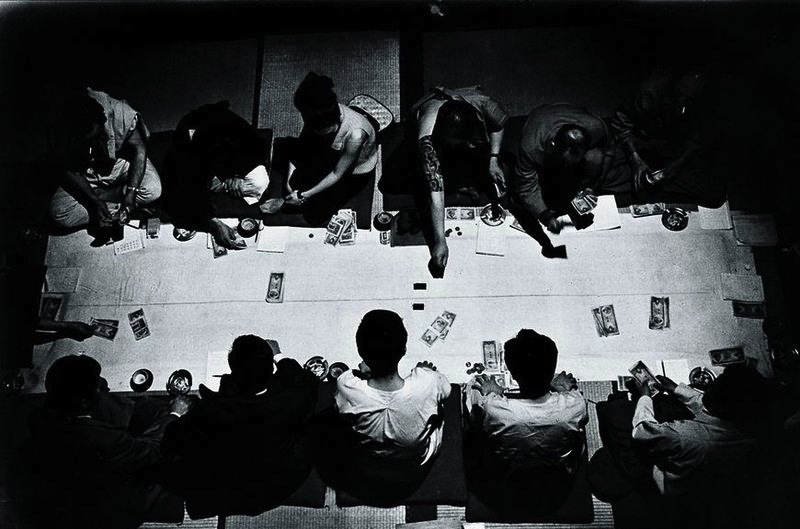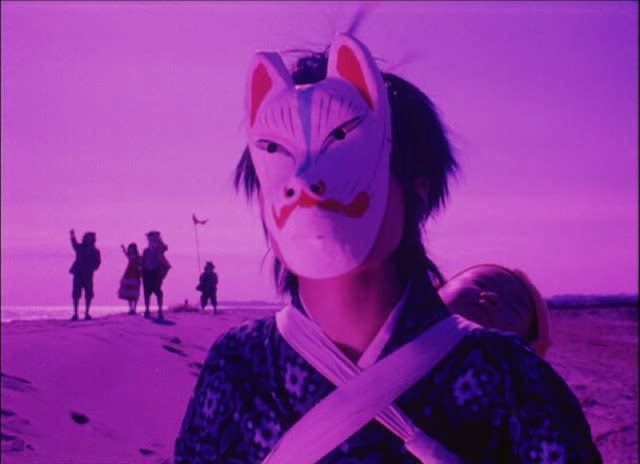14. Intentions Of Murder (Shohei Imamura, 1964)
A list about the Japanese new wave would not be complete without ”Intentions of Murder” and is commonly seen as the film that personifies most of the director Shohei Imamura’s key interests. Themes like sex, powerful female characters and oppression, are all brought together in this film.
The story observes a lower-class housewife in a boring and loveless marriage, with a husband who frequently has affairs. After being brutally raped by a burglar, he develops a strange but passionate love for her. This puts the poor woman in a frustrating predicament, where she is caught between her unaffectionate husband and love-struck rapist.
It’s unsentimental and unapologetic, but still manages to form a powerfully candid portrait of a woman fighting against a male dominated world.
13. Thirst For Love (Koreyoshi Kurahara, 1966)
Director Koreyoshi Kurahara is probably more famous for his 1983 epic “Antarctica” or his 1960 sun tribe film “The Warped Ones”, which many people reading this would have expected to make the list. However, I feel like “The Warped Ones”, “Thirst for Love” harbours the themes and conventions you would typically find in new wave films, but possesses enough exclusive qualities to give it a sense of unique relevance.
“Thirst for Love” is an atmospheric psychological drama about a young woman who married into a rich family, after the death of her husband she develops a sexual relationship with her father-in-law. This complicated predicament is made worse by a destructive fascination she develops with the family gardener.
The combination of fast cutaways and long handheld tracking shots gives the film an impressionistic feel. It could be argued that it is one of the Nuberu Bagu films that most resemble the aesthetics found in the French new wave.
12. A Fugitive From The Past (Tomu Uchida, 1965)
“Fugitive from the Past” is a 1965 noir masterpiece, accompanied with the director Tomu Uchida’s trademark poetic realism and an outstanding performance by Rentaro Mikuni.
The film is broken up into three acts and follows three thieves who escape from a heist, but before they were able to escape with their loot, one of the robbers kills the other two. The corpses are found after they wash up near the aftermath of a maritime disaster, this provokes a particularly keen policeman to investigate.
The robber finds refuge with a prostitute played by new wave scarlet Sachiko Hidari and gives her a generous portion of his loot to keep him hidden. The robber’s ruthless and complicated sensibilities parallel the policeman’s intensifying obsession with the case.
What stands out with this film is amongst its dark and twisted themes, is a skilful use of emotional and satirical subtlety. It is without a doubt one of the most mature films connected with the new wave.
11. Crazed Fruit (Kō Nakahira, 1956)
“Crazed Fruit” was Kō Nakahira’s early new wave masterpiece about Japan’s Taiyo Zoku (Sun Tribe) subculture in the 1950’s and is regarded as one of the most important films of the Nuberu Bagu. Set primarily on a beach in summertime, the plot concerns two brothers who become infatuated with a beautiful and charming young woman. The older pessimistic brother Natsuhisa and the more formidable teenage virgin Haruji, become tangled in a four-way love conflict with Eri, who is also married to an older American businessman.
What separates a film like “Crazed Fruit” from the new wave films of France or the American teen rebel films of the 1950’s, is its frank approach towards sex. Japan currently has a reputation for its confident ways of dealing with sexuality within its cinema, but at the time this film pushed the mark.
The film also launched the Sun Tribe film subgenre, which focused on lives of Japanese teenagers that indulged in hedonistic and rebellious lifestyles during the 1950’s and 60’s. The term references writers Shintaro Ishihara’s novel “Season of the Sun”, which attempted to personify the carefree and self-indulgent nature of the new Japanese teenage identity.
10. Go, Go Second Time Virgin (Koji Wakamatsu, 1969)
When a film opens with a beautifully shot sequence depicting the gang rape of a 17 year old girl (yes, the paradox hurts my head too), you almost immediately realize you’re probably watching a film from the Japanese New Wave. It’s essentially a complicated and bizarrely romantic (at least to me) love story between a teenage rape victim and a disturbed homicidal voyeur, who spend several days getting to know each other on the roof top where the girl was raped.
“Go Go second time virgin” is sometimes referred to as a Japanese Pink film, this was a term coined to categorize various exploitation movies from the 1960s and 1970s. Though critics like Donato Totaro have famously interpreted it as a critique of the genre, especially its frequent misogynistic tones.
In retrospect, many argue that the extreme nature of the film was a way to hit back against the governments censorship controversies of the time. Almost like a battering ram, knocking down the walls of suppression and allowing artists to obtain their freedom of expression.
9. Pale Flower (Masahiro Shinoda, 1964)
“Pale Flower” is a haunting and nihilistically fuelled noir released in 1964 by new wave heavy weight Masahiro Shinoda. Thematically it is influenced by the French poet Charles Baudelaire’s decadence driven book of poetry titled “The Flowers of Evil”. The film revolves around a Yakuza member (Muraki) who has recently left jail after serving a murder charge and how he chaperons a young thrill-seeking upper-class woman (Saeko).
The characters are both addicted to gambling, and the illegal betting parlour sequences are composed in such a way, they ironically exhibit a lyrical sense of beauty.
The film depicts post-war Japan in a cynical light. It critiques how old ritual structures are still maintained, but the lack of moral fabric has rendered them pointless and almost existentially destructive.
One of the primary ways the film achieves its intense qualities, is the complex and anti-romantic attraction between Muraki and Saeko. Muraki says “What was it about her? The first time I saw Saeko, what was that fierce passion I felt? Love? No it wasn’t love. We we’re simply alike”.
8. Throw Away Your Books, Rally In The Streets (Shuji Terayama, 1971)
Moving to the back end of the new wave we have maverick director Shûji Terayama’s 1971 experimental masterpiece “Throw away your books, rally the streets”. With a seemingly structureless narrative, the film depicts a series of vignettes that form a Wabi-sabi-like portrait of a young man trying to “make something of his life”.
Clearly the film was a wayward attack on Japan’s growing descent into materialism, but to really appreciate the film you should do as the title says, “Throw away your books!”. Terayama doesn’t care about academia or intellectual discourse; he wants the film to be experienced not evaluated, and to provoke our most innate responses. For me, it’s not so much about what we can get from the film, but what can be said about us, based on our reactions to it.
If pure energy and passion could be captured on celluloid it would not look much different to this new wave masterpiece. If you are able to cut away your presuppositions of what cinema “should be”, the film is just as entertaining as it is challenging.
